Understanding the Basics of Sanding and Refinishing a Wooden Floor with Water Damage
Sanding and refinishing a wooden floor is a process that involves removing the existing finish, sanding the floor to a smooth surface, and then applying a new finish. This process is necessary to restore the floor to its original condition and to protect it from further damage.
When it comes to water damage, it can have several negative effects on a wooden floor. water can cause the wood to warp and swell. This can lead to an uneven surface and make the floor unstable. Additionally, water can cause the wood to discolor, resulting in unsightly stains. Furthermore, if water damage is not addressed promptly, it can lead to the growth of mold and mildew, which can be hazardous to the health of those living in the home or working in the business.
Addressing water damage on a wooden floor is crucial for several reasons. it helps prevent further damage to the floor. If left untreated, water damage can worsen over time and may even require a complete replacement of the floor, which can be costly and time-consuming. addressing water damage ensures the floor remains safe and structurally sound. Warped and unstable floors can pose a tripping hazard and compromise the overall integrity of the space. addressing water damage helps restore the aesthetic appeal of the floor. By sanding and refinishing the floor, it can regain its original beauty and enhance the overall appearance of the home or business.
Identifying the Signs of Water Damage on Your Wooden Floor
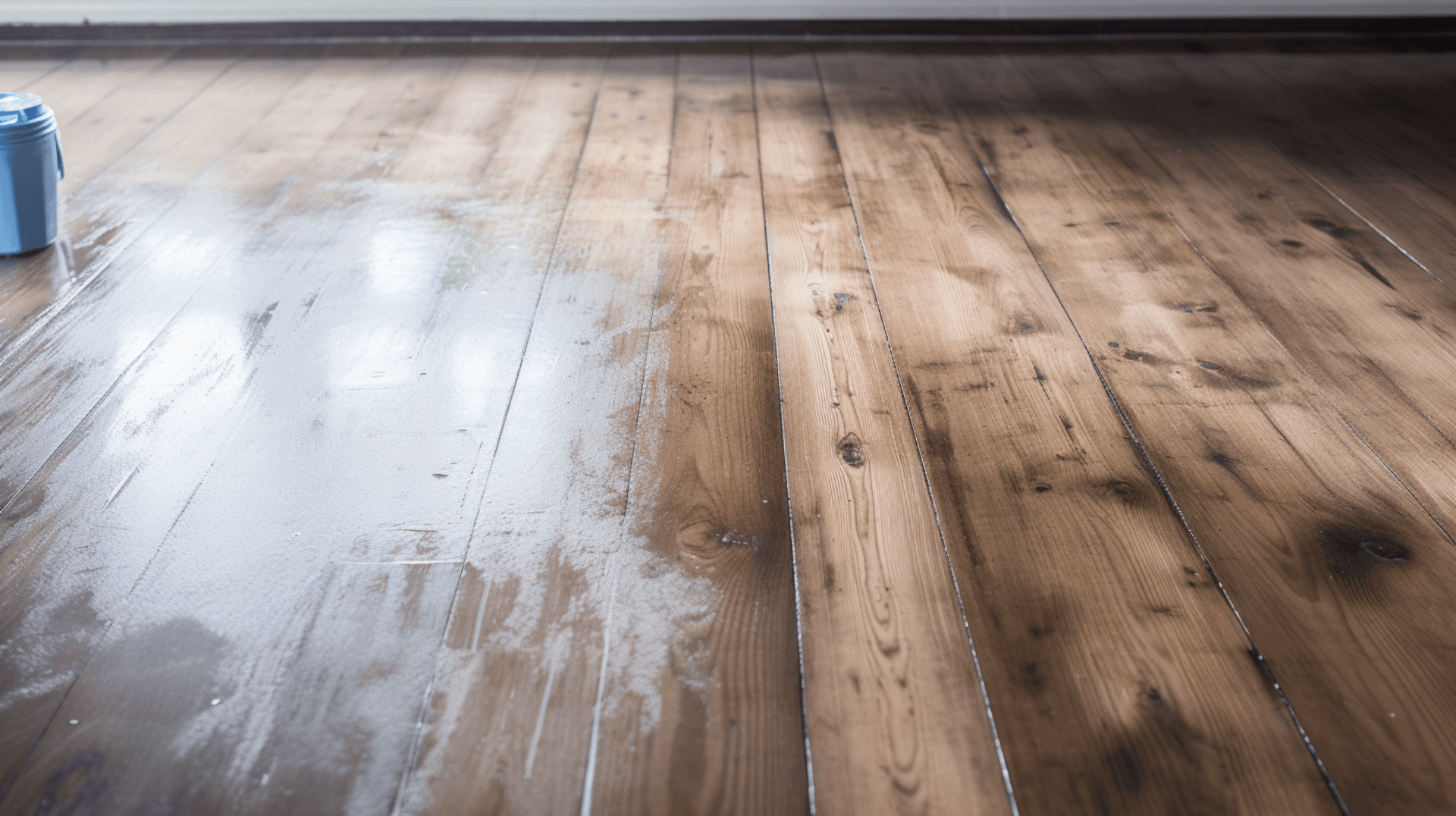
Identifying the Signs of Water Damage on Your Wooden Floor
Identifying the signs of water damage on a wooden floor is essential for protecting the floor from further damage. Common signs of water damage include warping, discoloration, and mold growth. Warping is one of the most obvious signs of water damage and can be identified by looking for uneven surfaces or gaps between the boards. Discoloration is another common sign of water damage and can be identified by looking for dark spots or stains on the floor. mold growth is a sign of water damage and can be identified by looking for black, green, or white spots on the floor.
It is important to differentiate between surface water damage and structural water damage. Surface water damage is caused by water that has been left on the surface of the floor for an extended period of time. This type of water damage is usually easy to repair and can be addressed by sanding and refinishing the floor. Structural water damage, on the other hand, is caused by water that has penetrated the wood and caused it to warp or swell. This type of water damage is more difficult to repair and may require a complete replacement of the floor.
Evaluating the Extent of Water Damage on Your Wooden Floor
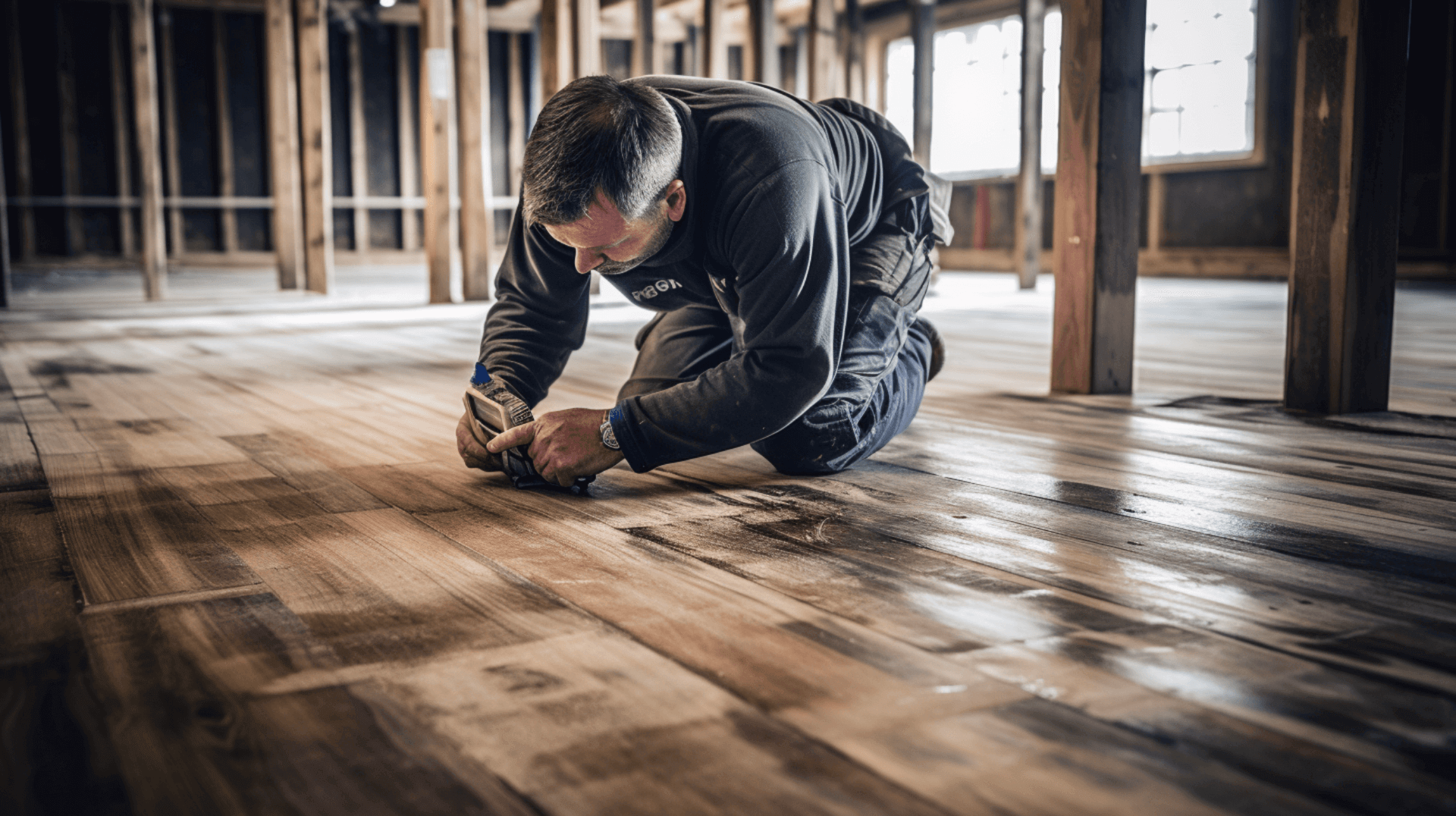
Evaluating the Extent of Water Damage on Your Wooden Floor
Evaluating the extent of water damage on a wooden floor is essential for determining the appropriate course of action. To assess the severity of water damage, it is important to look for signs such as warping, discoloration, and mold growth. Warping is one of the most obvious signs of water damage and can be identified by looking for uneven surfaces or gaps between the boards. Discoloration is another common sign of water damage and can be identified by looking for dark spots or stains on the floor. mold growth is a sign of water damage and can be identified by looking for black, green, or white spots on the floor.
In addition to looking for signs of water damage, it is important to evaluate the condition of any cables, pipes, or services in the sub-floor void. This assessment helps identify potential hazards such as insulated cables that may be at a higher risk of overheating or using inflammable materials, which can pose additional risks to residents. Visual inspection of all sub-floor voids is also crucial to identify any leaks or water ingress that may cause long-term issues for the property.
Furthermore, it is important to identify and mark up any areas where the floor has been structurally compromised due to water damage. This includes noting any weakened or rotted wood, as well as any areas where the floor has become uneven or unstable. Properly assessing the extent of water damage allows for a more accurate determination of the necessary repairs or restoration work.
Preparing Your Wooden Floor for Sanding and Refinishing
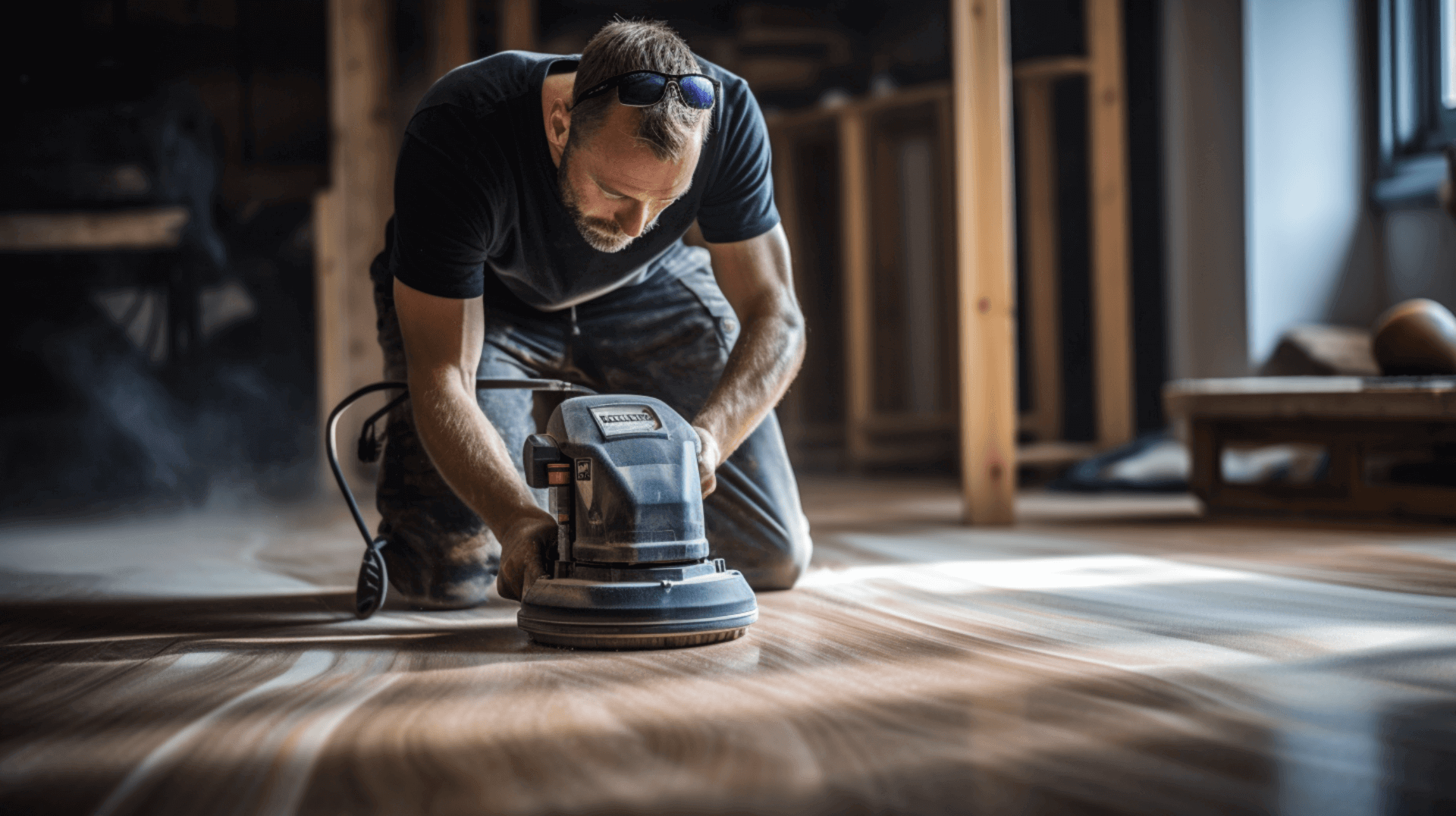
Preparing Your Wooden Floor for Sanding and Refinishing
To ensure that the sanding and refinishing process is done properly and that no items are damaged in the process, it is important to follow a thorough preparation process.
The first step is to remove any furniture, rugs, or other items from the floor to create a clear working space. This ensures that the sanding and refinishing process can be done without any obstructions.
Next, it is crucial to inspect the floor for signs of water damage, such as warping, discoloration, and mold growth. If any of these signs are present, it is important to address the water damage before proceeding with the sanding and refinishing process. This may involve drying out the affected areas, treating any mold or mildew, and repairing or replacing damaged sections of the floor. It is also important to inspect for any signs of internal decay in large-section timbers, especially where timbers enter walls, as decay can be localized in these areas.
In addition to inspecting the floor, it is important to assess the condition of the sub-floor and any underlying structures. This includes checking for any cables, pipes, or services in the sub-floor void. This assessment helps identify potential hazards such as insulated cables that may be at a higher risk of overheating or using inflammable materials. It is also important to check for any signs of hazardous materials, such as asbestos, in the sub-floor area.
Once the floor and sub-floor have been thoroughly inspected and any necessary repairs have been made, it is time to gather the tools and materials needed for sanding and refinishing. This typically includes a sander, sandpaper of various grits, wood filler for any gaps or imperfections, and a vacuum cleaner to remove dust and debris during the sanding process. It is important to wear appropriate safety equipment, such as safety glasses, dust masks, and ear protection, to protect yourself during the preparation process.
The Process of Sanding a WaterDamaged Wooden Floor
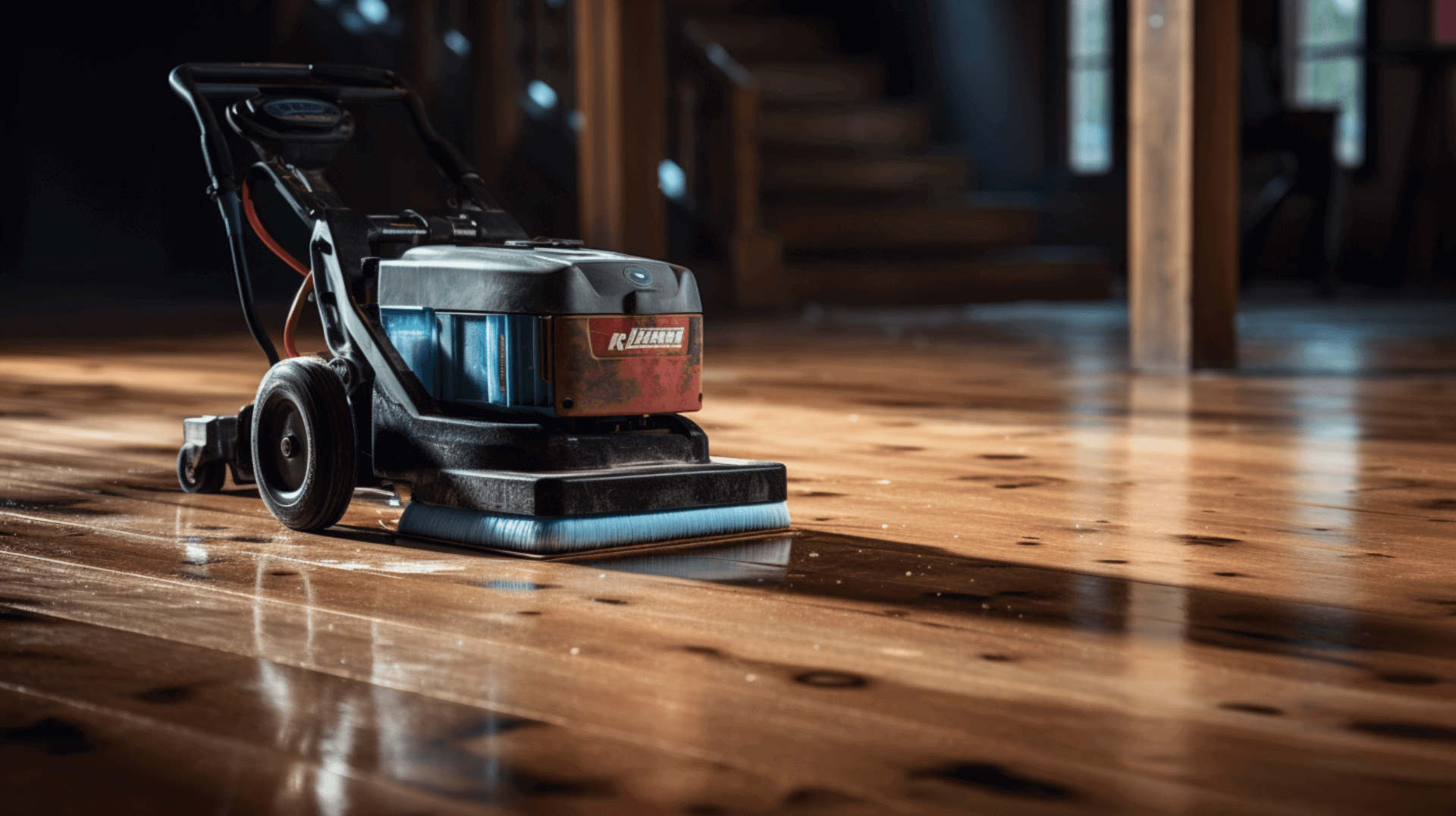
The Process of Sanding a Water-Damaged Wooden Floor
Sanding a water-damaged wooden floor is a crucial step in the restoration process. To ensure a successful sanding process, it is important to follow the correct procedure and avoid common mistakes.
Before beginning the sanding process, it is important to inspect the floor and sub-floor for signs of any cables, pipes, or services in the sub-floor void. This assessment helps identify potential hazards such as insulated cables that may be at a higher risk of overheating or using inflammable materials, which can pose additional risks to residents. Visual inspection of all sub-floor voids is also crucial to identify any leaks or water ingress that may cause long-term issues for the property.
Once the floor has been inspected and any necessary repairs have been made, the sanding process can begin. Start with a drum sander equipped with the appropriate grit of sandpaper for the job. Begin with a coarser grit, such as 40-grit, to remove the existing finish from the floor. Move the sander in the same direction as the grain of the wood to achieve an even result.
After sanding the floor with the coarse-grit sandpaper, gradually progress to finer-grit sandpaper to achieve a smooth and even surface. This may include using 60-grit, 80-grit, and finally 120-grit sandpaper. Make sure to thoroughly clean the floor between each sanding stage to remove any dust and debris.
To minimize the amount of dust created during the sanding process, it is recommended to use a sander with a dust collection system. This helps keep the work area clean and reduces the risk of respiratory issues. It is also important to wear appropriate safety equipment, such as safety glasses, dust masks, and ear protection, to protect yourself during the sanding process.
Choosing the Right Finish for Your Wooden Floor
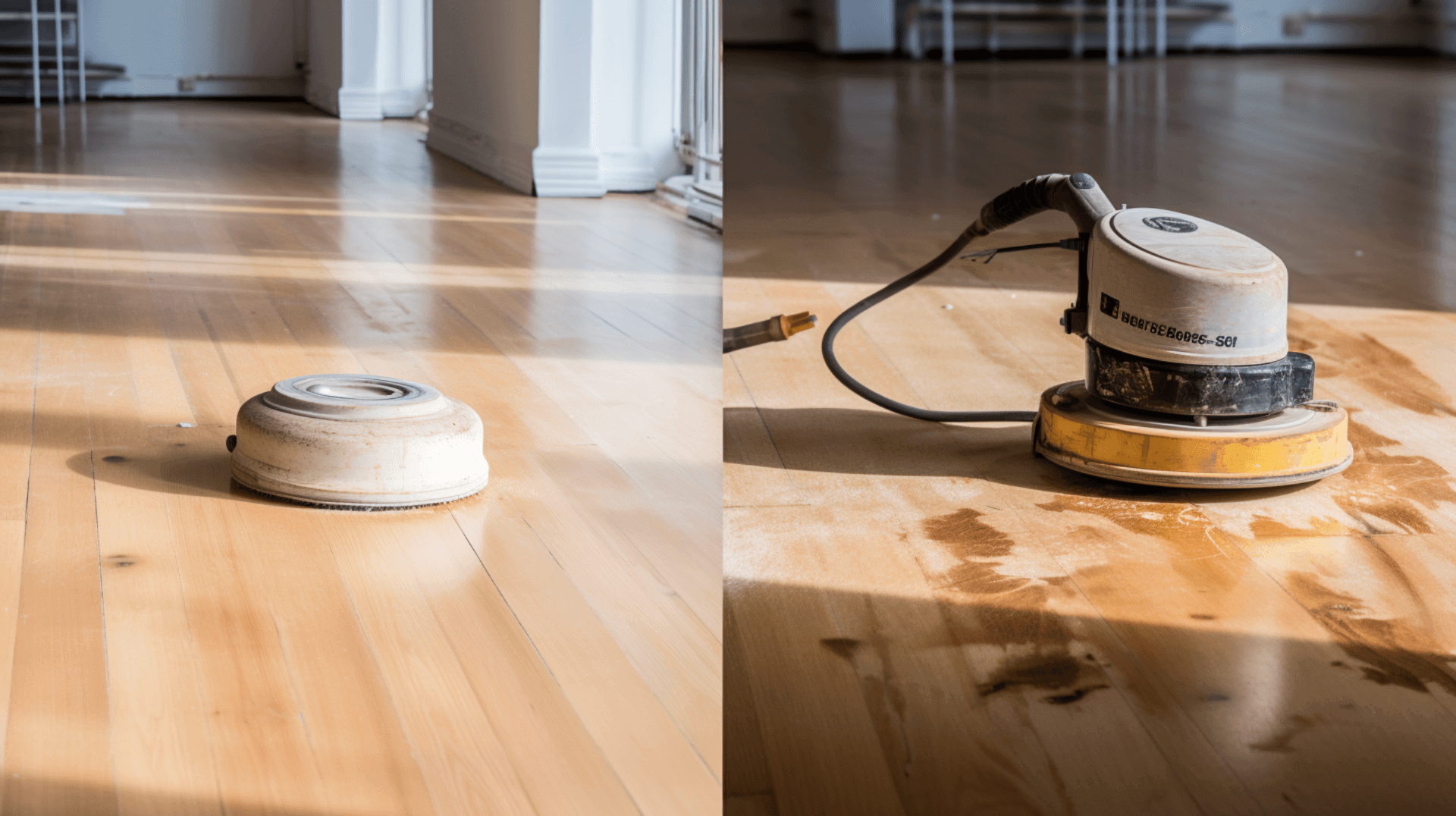
Choosing the Right Finish for Your Wooden Floor
Choosing the right finish for your wooden floor is an important step in the restoration process. The type of finish you choose will affect the appearance and durability of the floor, so it is important to consider the different types of finishes available and the best finishes for a wooden floor with water damage.
The most common types of finishes for wooden floors are oil-based, water-based, and wax-based. Oil-based finishes are the most durable and provide a natural, matte finish. They offer excellent protection against water damage and are ideal for areas with high foot traffic. Water-based finishes, on the other hand, are less durable but provide a glossy finish. They are easier to apply and maintain, making them a convenient option for homeowners. Wax-based finishes provide a natural, matte finish and are often used to create a rustic or antique look. they are the least durable option and may require more frequent maintenance and reapplication.
When choosing a finish for a wooden floor with water damage, it is important to consider the severity of the damage. For minor water damage, a water-based finish is recommended as it provides a glossy finish that helps hide any imperfections. For more severe water damage, an oil-based finish is recommended as it is more durable and provides a natural, matte finish. Additionally, it is important to consider the level of traffic the floor will receive. For high-traffic areas, an oil-based finish is preferable as it offers better protection against wear and tear.
The Process of Refinishing a WaterDamaged Wooden Floor
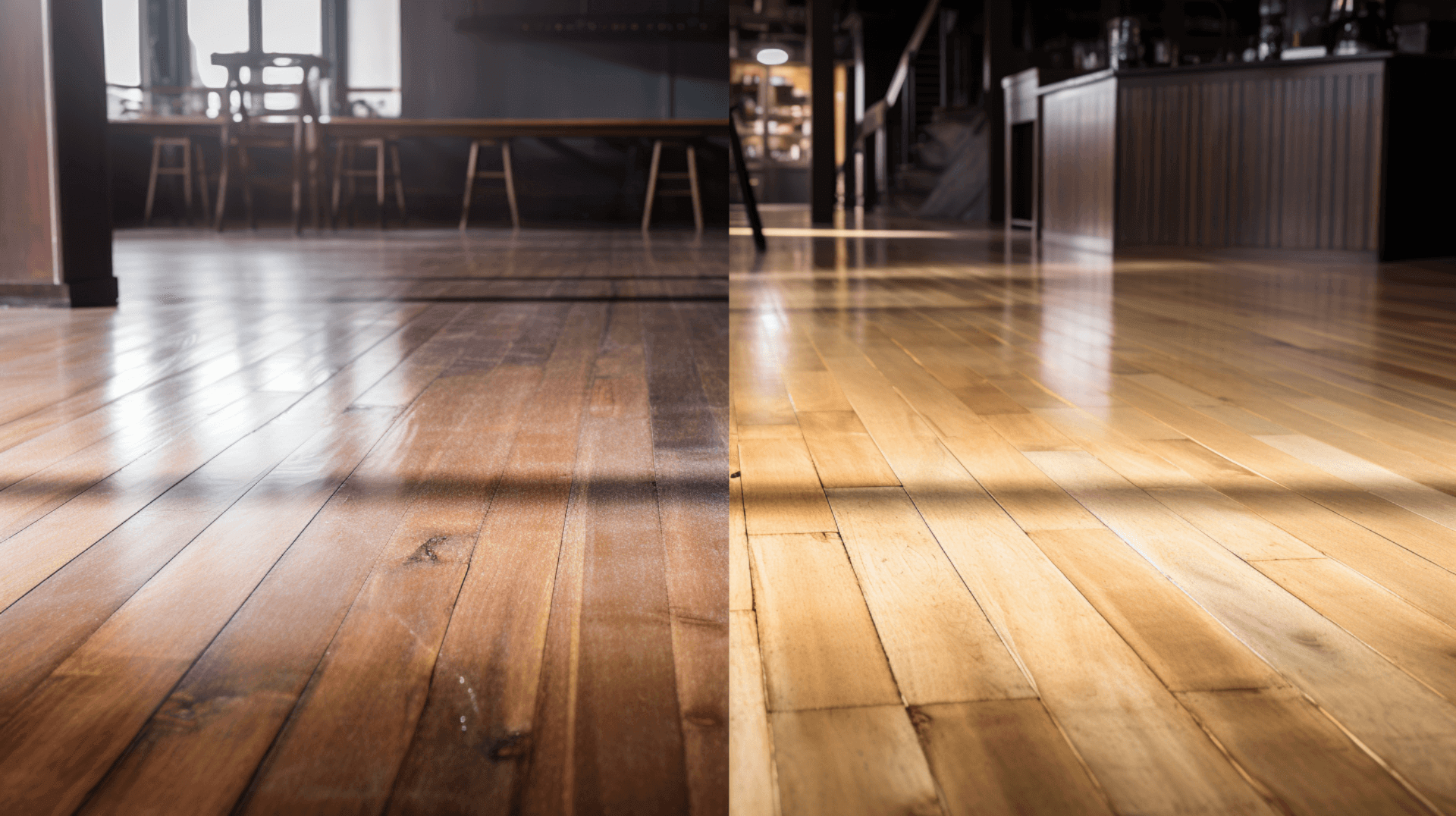
The Process of Refinishing a Water-Damaged Wooden Floor
Refinishing a water-damaged wooden floor is an important step in the restoration process. To ensure a successful refinishing process, it is important to follow the correct procedure and avoid common mistakes.
Before beginning the refinishing process, it is crucial to inspect the floor for any signs of damage or potential hazards. This includes checking for any cables, pipes, or services in the sub-floor void, as well as any signs of water damage or leaks. By identifying and addressing these issues beforehand, you can ensure a smooth and effective refinishing process.
Start by thoroughly cleaning the floor with a vacuum and a damp mop to remove any dust, debris, or residue. This step is essential to create a clean and smooth surface for the refinishing products to adhere to. Once the floor is clean, apply a coat of wood sealer to protect the wood from moisture and to provide a solid base for the finish. Allow the sealer to dry completely according to the manufacturer’s instructions.
When selecting a finish, consider both the desired appearance and the level of durability required. Oil-based finishes are the most durable and provide a natural, matte finish. They offer excellent protection against water damage and are ideal for areas with high foot traffic. Water-based finishes, on the other hand, provide a glossy finish and are easier to apply and maintain. They are a convenient option for homeowners. Wax-based finishes provide a natural, matte finish and are often used to create a rustic or antique look. they are the least durable option and may require more frequent maintenance and reapplication.
To ensure a durable and aesthetically pleasing refinishing result, it is important to avoid common mistakes. These include applying too much or too little finish, not allowing sufficient drying time between coats, and neglecting proper floor preparation. Additionally, follow the manufacturer’s instructions for the chosen finish and use the appropriate tools and techniques.
Maintaining Your Wooden Floor PostSanding and Refinishing
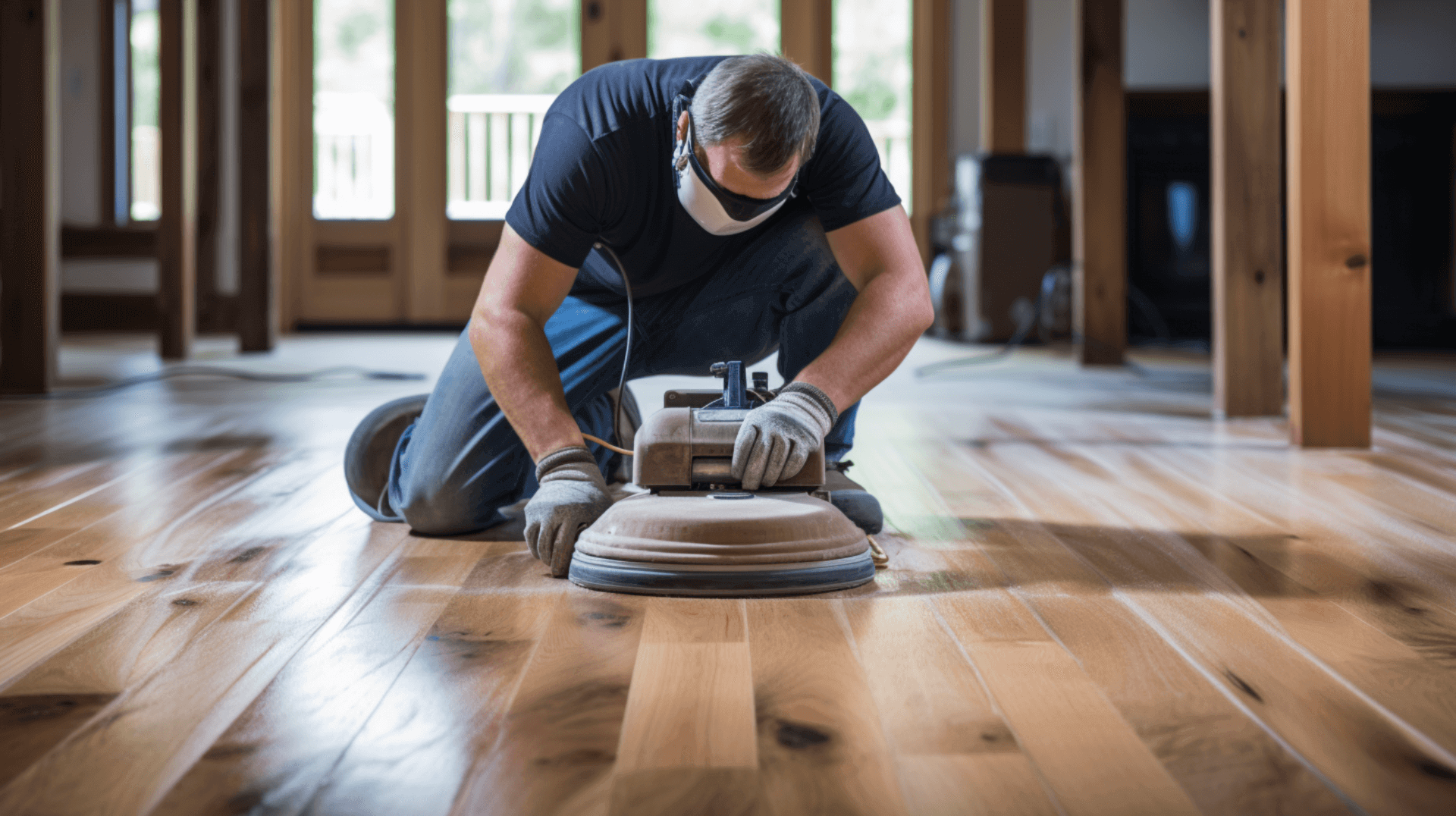
Maintaining Your Wooden Floor Post-Sanding and Refinishing
Maintaining your wooden floor after sanding and refinishing is crucial to prevent future water damage and ensure its longevity. By following the correct maintenance procedures and best practices, you can keep your wooden floor in optimal condition.
Start by regularly cleaning the floor using a vacuum and a damp mop. This will effectively remove dust, debris, and residue that can accumulate over time. It is important to avoid using harsh chemicals or abrasive cleaning products as they can damage the finish of the floor.
To prevent future water damage, conduct regular inspections of the floor for any signs of damage or potential hazards. Check for cables, pipes, or services in the sub-floor void, as well as any indications of water damage or leaks. Adequate ventilation is essential to prevent moisture buildup, which can lead to water damage. Additionally, promptly clean up any spills to prevent us from seeping into the wood and causing damage.
In addition to these maintenance practices, it is important to consider some additional best practices. Verify that the address for installation is correct and ensure that the technician presents their credentials to the customer. It is also important to obtain permission before parking vehicles on the customer’s drive. Clearly explain the purpose of the visit to the customer and what they can expect from the refinishing process. By providing clear communication and respecting the customer’s property, you can ensure a positive experience and maintain the integrity of the wooden floor.
By following these maintenance procedures and best practices, you can effectively maintain your wooden floor post-sanding and refinishing, preventing water damage and preserving its beauty for years to come.
The Benefits of Sanding and Refinishing a Wooden Floor with Water Damage
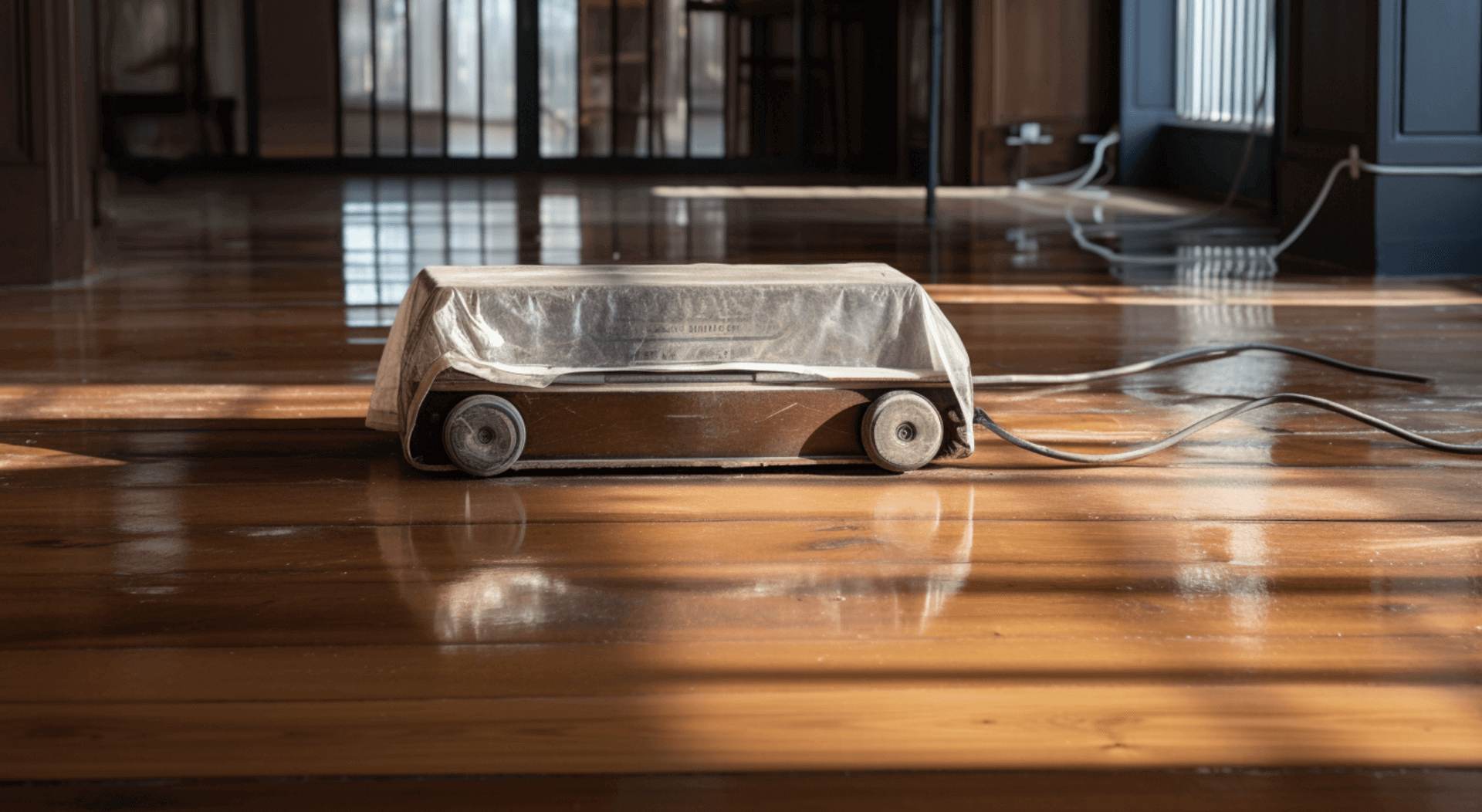
Sanding and refinishing a water-damaged wooden floor can indeed dramatically improve its appearance. This process effectively removes any existing damage and restores the floor to its original condition. it offers the flexibility to customize the look and feel of the floor, whether you prefer a natural, matte finish or a glossy, modern finish.
In addition to enhancing the floor’s appearance, sanding and refinishing also significantly increases its longevity. By eliminating any existing damage, the floor becomes better protected against future water damage. Furthermore, the application of a high-quality finish provides an additional layer of defense against moisture and wear and tear.
It’s important to note that when refinishing a water-damaged wooden floor, it’s crucial to use certified insulation materials suitable for use as UFI (Underfloor Insulation). Additionally, the area-weighted U-value should be calculated in accordance with the conventions outlined in the current version of BR443 conventions for calculating U-values. This ensures that the floor maintains optimal insulation properties.
One of the notable advantages of sanding and refinishing a water-damaged wooden floor is the cost savings it offers compared to replacing the entire floor. this process is more affordable and less time-consuming, allowing homeowners and business owners to achieve a beautiful and durable result without breaking the bank.
When to Consider Professional Help for Sanding and Refinishing a Wooden Floor
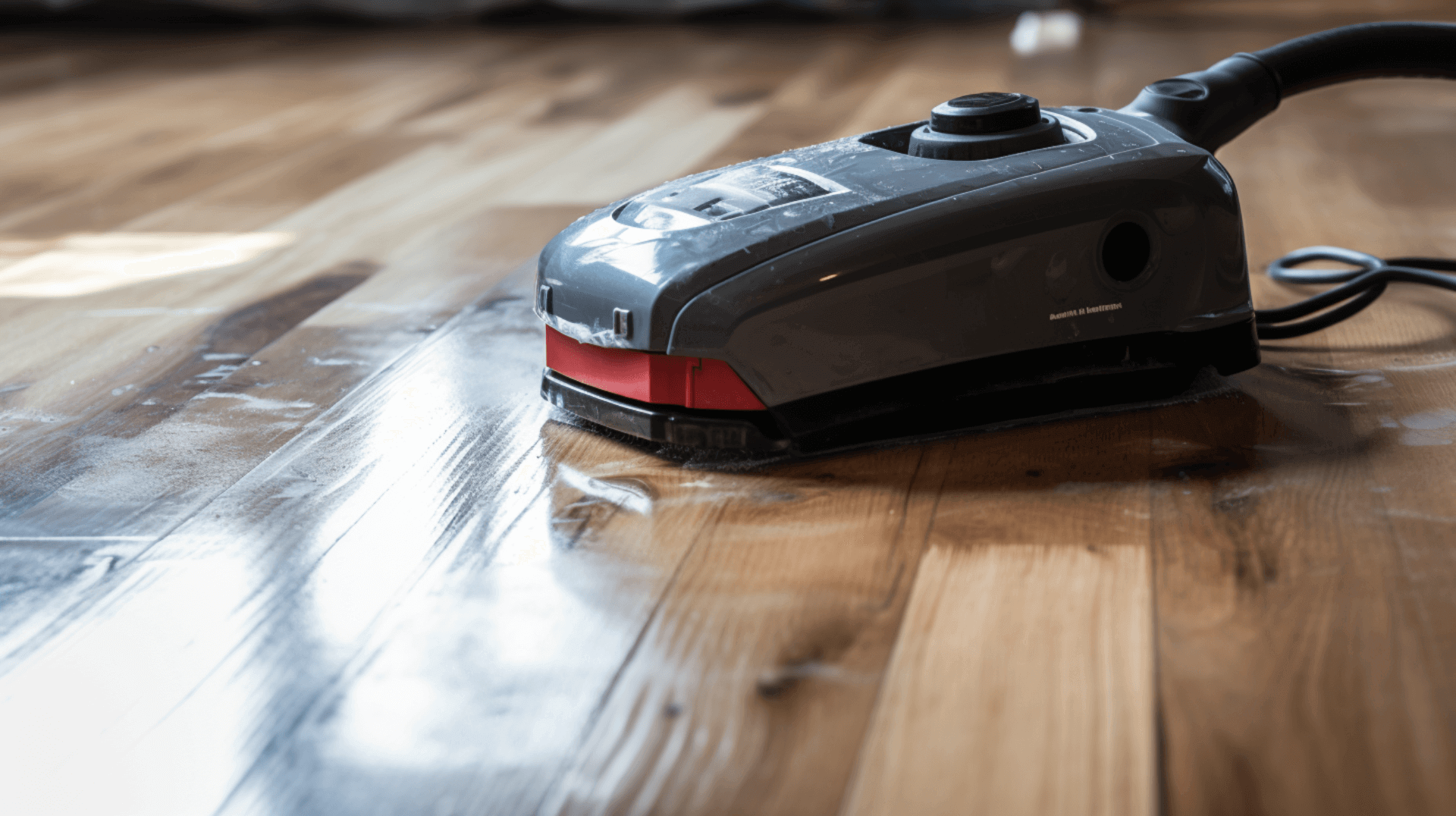
Sanding and refinishing a wooden floor is a complex and time-consuming task that requires specialized tools and expertise. It is important to consider the challenges of this task before attempting it yourself.
The first challenge is the preparation of the floor. This includes removing any existing furniture, carpets, and other items from the floor, as well as any existing finishes. It is also important to inspect the floor for any signs of damage or potential hazards, such as cables, pipes, or services in the sub-floor void. With the customer’s permission, remove materials and possessions if the customer is unable to do so. Put down dust sheets where required to protect the customer’s property. Following completion of the works, all packaging/waste materials must be properly disposed of. Clear up any mess as soon as possible and avoid disputes or negative responses to customer complaints or criticism.
The second challenge is the sanding process itself. This requires the use of specialized tools and techniques to ensure a smooth and even finish. It is important to use the correct grit of sandpaper and follow the proper sanding sequence to achieve the desired result. Additionally, dust containment is crucial to prevent health hazards and maintain a clean working environment. Professional floor sanders have the necessary experience and expertise to handle these challenges effectively.
Considering these challenges, it is advisable to hire a professional for sanding and refinishing a wooden floor. Professionals like GJP Floor Sanding have the necessary skills, tools, and knowledge to complete the job efficiently and to a high standard. We can ensure proper preparation, dust containment, and a smooth sanding process. By hiring a professional, you can save time, avoid potential mistakes, and achieve a professional-looking result for your wooden floor.
Why Choose GJP Floor Sanding for Your Wooden Floor Restoration Needs
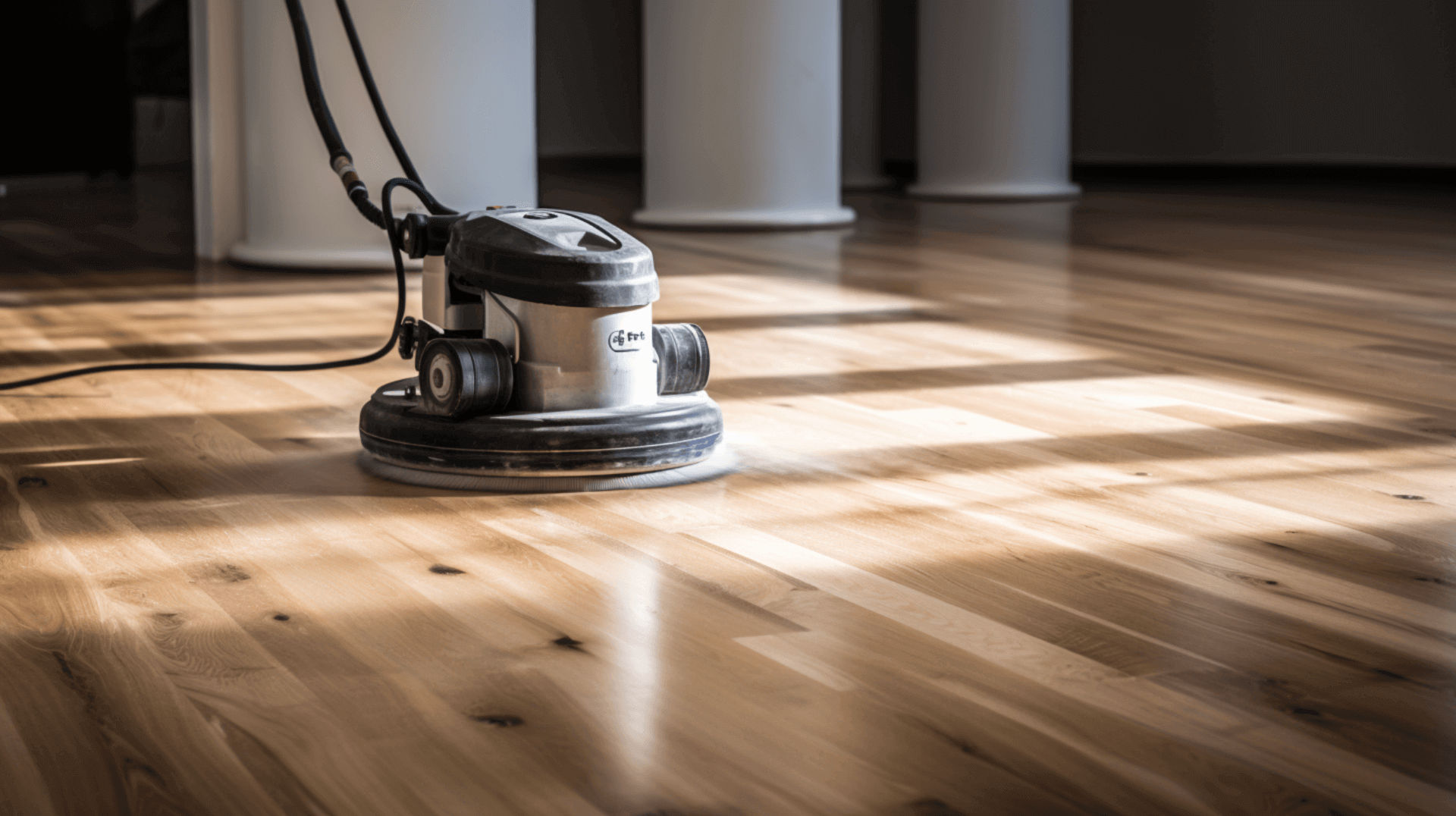
GJP Floor Sanding is a reliable choice for sanding and refinishing a wooden floor. With over 25 years of experience in the industry, we have the necessary skills, tools, and knowledge to complete the job efficiently and to a high standard.
GJP Floor Sanding offers a comprehensive range of services for wooden floor restoration. This includes sanding, refinishing, repairs, and maintenance. We also provide a variety of finishes, allowing customers to choose between natural, matte finishes or glossy, modern finishes based on our preferences.
One of the key advantages of choosing GJP Floor Sanding is our attention to detail and commitment to customer satisfaction. We conduct thorough inspections of the floor for any signs of damage or potential hazards, such as cables, pipes, or services in the sub-floor void. We also take the necessary precautions to protect the customer’s property during the restoration process, including removing materials and possessions with the customer’s permission if needed.
GJP Floor Sanding goes above and beyond to ensure that the floor meets the current relevant national building regulations. We use certified insulation materials suitable for use as UFI (Underfloor Insulation) and calculate the area-weighted U-value in accordance with industry standards. This ensures that the floor maintains optimal insulation properties and meets the required thermal transmittance (U-value) standards.
With our expertise and dedication, GJP Floor Sanding strives to provide a hassle-free experience and deliver a professional-looking result for every wooden floor restoration project. Our commitment to using high-quality materials, following industry standards, and addressing customer needs sets us apart as a reliable choice for sanding and refinishing a wooden floor.
Contact GJP Floor Sanding for Your Wooden Floor Restoration Needs
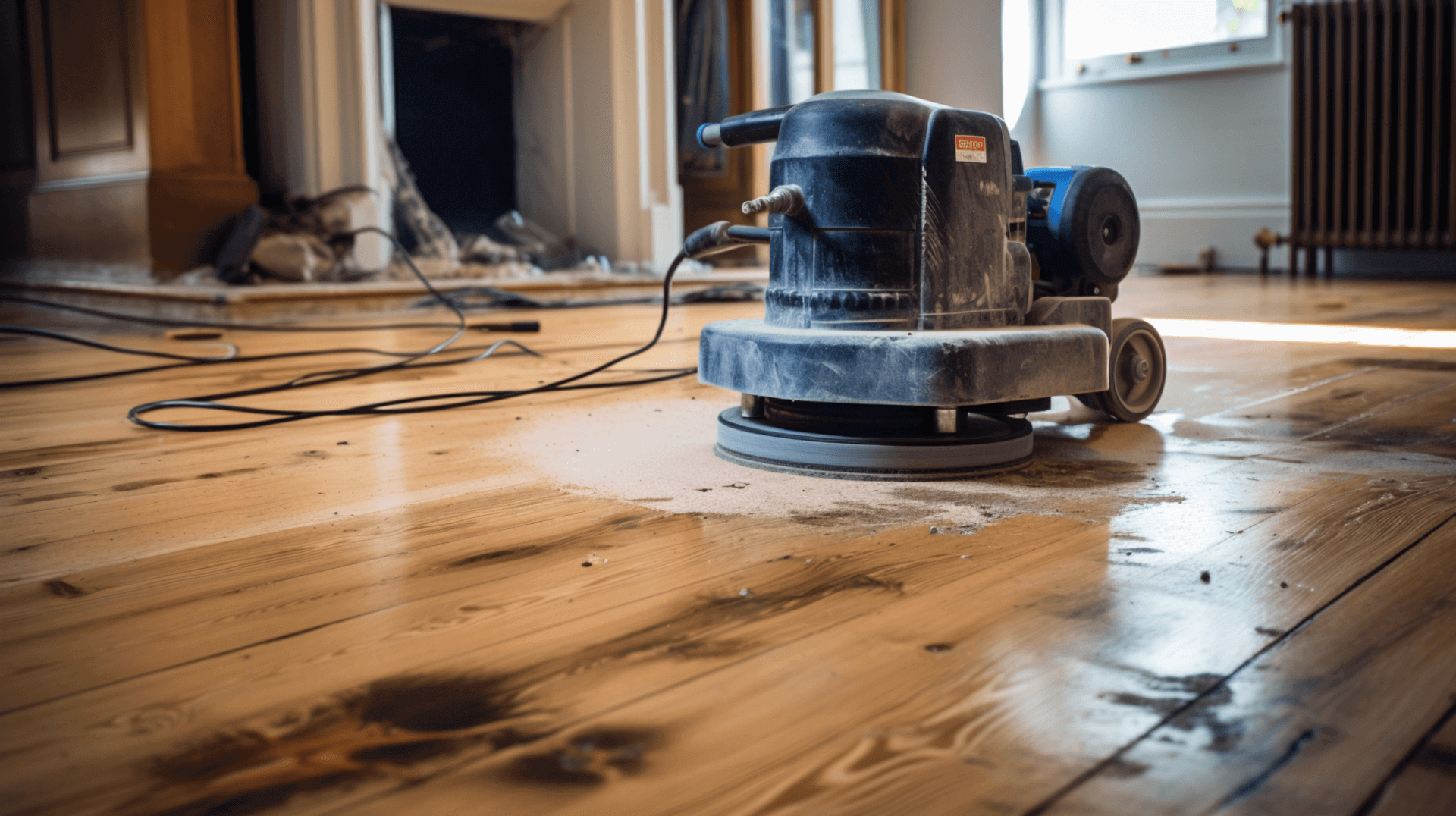
If you are looking for a reliable and experienced company to restore your wooden floor, contact GJP Floor Sanding. With over 25 years of experience in the industry, we have the necessary skills, tools, and knowledge to complete the job efficiently and to a high standard.
To get in touch with GJP Floor Sanding, you can call us on 02036 978 431 or fill out the contact form on our website. When contacting them, provide as much information as possible about your project, such as the type of floor, the size of the area, any existing damage or hazards, and any services or pipes present in the sub-floor void. Additionally, provide information about the building regulations and insulation requirements, such as the area-weighted U-value in accordance with industry standards, and any other relevant information. GJP Floor Sanding is experienced in meeting the current relevant national building regulations and can ensure that the floor maintains optimal insulation properties and meets the required thermal transmittance (U-value) standards.
GJP Floor Sanding offers a comprehensive range of services for wooden floor restoration. This includes sanding, refinishing, repairs, and maintenance. We also provide a variety of finishes, allowing customers to choose between natural, matte finishes or glossy, modern finishes based on our preferences. Additionally, we use certified insulation materials suitable for use as UFI (Underfloor Insulation) and calculate the area-weighted U-value in accordance with industry standards to ensure optimal insulation properties and compliance with thermal transmittance (U-value) standards.
With our attention to detail, commitment to customer satisfaction, and adherence to building regulations, GJP Floor Sanding is the reliable choice for your wooden floor restoration needs. Contact us today to discuss your project and achieve a professional-looking result for your wooden floor.
